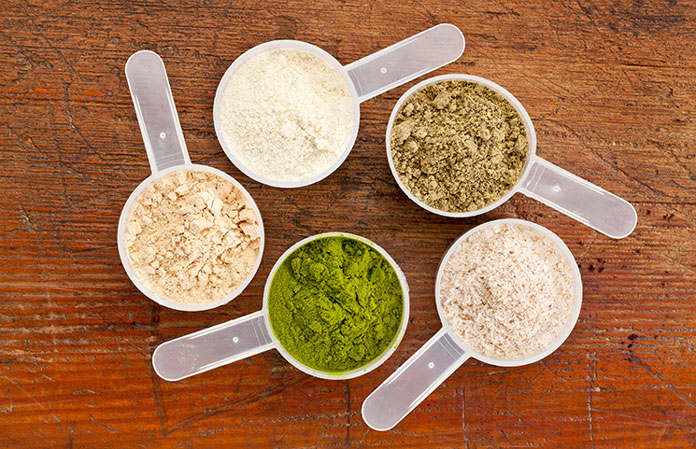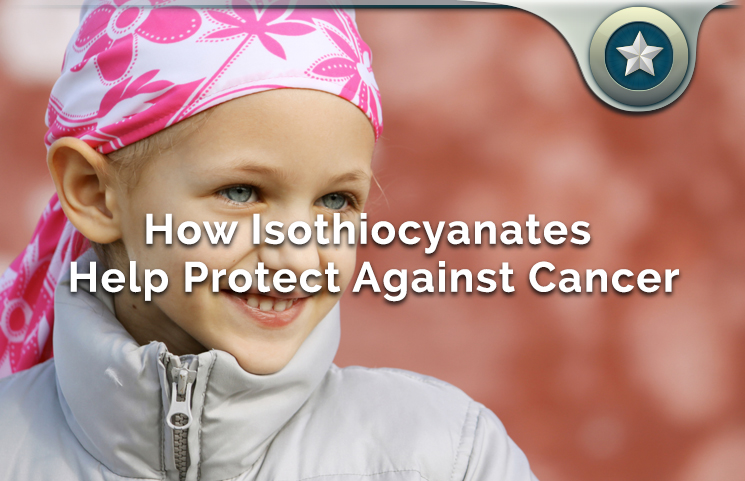Isothiocyanates are obtained from the hydrolysis of glucosinolates, sulphur-containing compounds that are obtained from cruciferous vegetables. Examples of cruciferous vegetables include kale, cabbage, and broccoli.
These types of vegetables are very rich in the sulphur-containing compound, and different forms of glucosinolates are found in cruciferous vegetables. Each of the glucosinolates forms a unique form of isothiocyanate upon hydrolysis.
An example is broccoli, which is rich in glucoraphanin, the precursor of sulforaphane. Watercress is rich in gluconasturtiin, which is another form of isothiocyanates. Gluconasturtiin is the precursor of phenethyl isothiocyanate.
At present, a lot of research work is focused on finding the cancer-preventive potential of isothiocyanates. Scientists suggest that the isothiocyanate-rich vegetables are valuable candidates for the treatment and prevention of cancer.
Food Sources Of Isothiocyanates
As already mentioned, isothiocyanates-rich foods include multiple forms of cruciferous vegetables. The vegetables that fall into this category include kale, cauliflower, cabbage, broccoli, and collards, among others.
The vegetables are used to add flavor to various dishes at home. Studies have revealed that dietary consumption of these vegetables reduces the risks of developing cancer in individuals. The anticancer properties of the cruciferous vegetables are attributed to the active compound isothiocyanate.
The most potent forms of isothiocyanates that are found in the vegetables include phenethyl isothiocyanate, benzyl isothiocyanate, and sulforaphane.
A single serving of broccoli can increase the blood levels of isothiocyanate by up to 0.25 micromole per liter. Numerous lab studies have demonstrated the antiproliferative nature of these compounds against the growth of cancerous tumors in the body.
Isothiocyanates have been shown to prevent the growth of tumors by causing apoptosis of the cancer cells. The compound also influences many cellular processes in the body, such as DNA repair and autophagy. In this article, we will discuss the various mechanisms by which isothiocyanates prevent cancer.

Anticancer Mechanisms Of Isothiocyanates
1. Effects On The Enzymes That Take Part In Carcinogen Metabolism
Biotransformation enzymes are involved in the metabolism and elimination of toxins, drugs, and carcinogens that may result in cancer. During phase one of the metabolism process, the enzymes facilitate the reactions that enhance the reactivity of compounds before they move to phase two of the metabolic process.
During phase two of metabolism, the water solubility of the compounds is increased to boost its elimination from the body. Studies have revealed that some carcinogenic compounds require activation via the phase one metabolism process to become active.
The compounds go through activation by the cytochrome P450 enzymes before they are capable of binding to the DNA and causing mutations in the body. Isothiocyanates have been found to inhibit the activity of the cytochrome p450 enzymes during phase one of the metabolism process, preventing the activation of the carcinogens.
A clinical study also discovered that when smokers increase their intake of watercress, there is a decrease in the activation of a procarcinogenic compound that is contained in tobacco.
Studies have also revealed that the enzymes that are involved in phase two of the metabolic process help protect the DNA from damage by carcinogens. Many isothiocyanate compounds have been found to induce the activity of these enzymes. The enzymes involved in phase two include quinone reductase, UDP-glucuronyl transferase, GSTs, and glutamate cysteine ligase. These enzymes protect DNA from damage by carcinogens and free radicals.
2. Preservation Of Normal Cell Cycle Regulation
As a standard cell divides, it goes through a sequence of stages before it is capable of dividing again. DNA damage can lead to the arrest of the cell cycle to allow time for DNA repair.
If the damage cannot be rectified, the pathways that lead to apoptosis get activated. A defective regulation of the cell cycle can result in the mutation of cells. Mutations can later lead to the development of cancer in the affected individual.
Studies have revealed that a number of isothiocyanate compounds can induce cell cycle arrest in cultured cells.
3. Prevention Of Proliferation And Apoptosis
Cancer cells are known to undergo rapid growth. The cells proliferate fast, losing the ability to respond to apoptosis signals. Isothiocyanates have been found to inhibit the rapid growth of cancer cells and induce programmed cell-death in various ways.
4. Antibacterial Activity
Some forms of cancer, such as gastric cancer, are related to bacterial activity. Helicobacter pylori is known to induce the development of gastric cancer in individuals.
In a study that was conducted in the lab, it was found that isothiocyanates can inhibit the growth of Helicobacter pylori strains. The compound also killed the bacterial strains, including those that had developed resistance to antimicrobial agents.
5. Anti-Inflammatory Activity
The inflammatory activity in the body has been demonstrated to increase the risk of developing cancer. The inflammatory responses in the body increase proliferation of cells and inhibit apoptosis, which is a programmed cell death.
Isothiocyanates have been found to block the inflammatory signals that are secreted by the white blood cells. They also block the binding of a pro-inflammatory response factor to the DNA.
6. Inhibits The Process Of Deacetylation Of Histone
DNA is coiled around proteins known as histones inside the nucleus of a cell. Histone acetyl transfers acetylate the histones, making the DNA accessible to transcription factors. The transcription factors bind to the DNA, activating the process of gene transcription.
Deacetylation of the proteins by the enzyme histone deacetylase prevents the transcription factors from accessing the DNA. Both acetylation and deacetylation processes are important for regulating the process of gene transcription. However, the balance between these two vital processes may be interrupted by cancer cells.
Compounds capable of blocking the activity of histone deacetylase have been found to potentially suppress the development of cancer.
Isothiocyanate has been found to suppress the development of cancer cells by inhibiting the activity of the histone deacetylase enzyme. As a result, transcription of tumor suppressor proteins is enhanced, leading to differentiation and apoptosis.

Safety Of Isothiocyanates
Side Effects
There are no adverse reactions in humans that have been reported. However, an increased intake of the chemical compound was found to promote bladder cancer in rats.
Pregnancy And Lactation
High dietary intake of isothiocyanates during pregnancy or lactation does not result in any known side effects. However, there is not enough information regarding the intake of isothiocyanates supplements during pregnancy.
Drug Interaction
There is no information on whether isothiocyanates can interact with prescriptions or over the counter medications. However, its interaction with the CYP450 enzymes could lead to potential interaction with the enzyme’s substrates.
Isothiocyanates Conclusion
Isothiocyanates have a great potential in the prevention and treatment of cancer. However, more research needs to be done on how to optimize the dosage for the chemical compound and the dosing regimen for humans.









